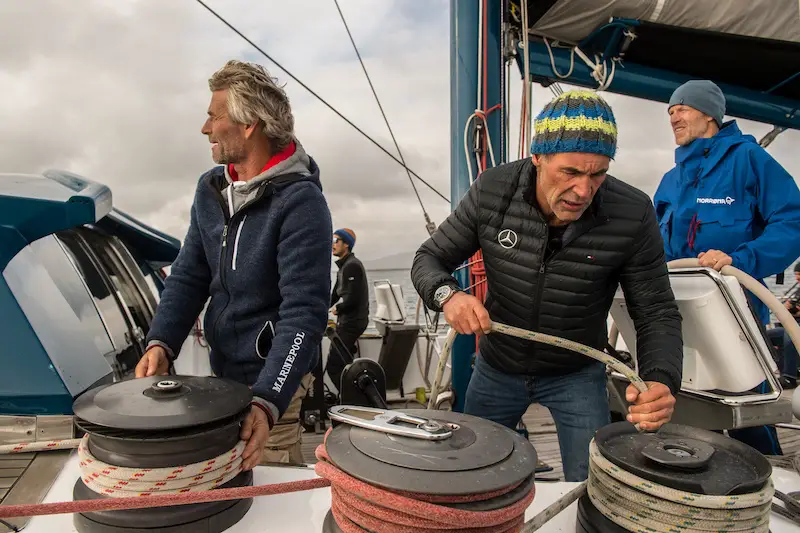Last week I shared the news that polar legends Børge Ousland and Mike Horn were embarking on yet another difficult and impressive expedition into the Arctic. As you’ll recall, back in 2006, the duo skied to the North Pole completely under the cover of the darkness of winter, spending 61 days en route. This time out, they’re attempting something even longer and potentially harder combing both sailing and skiing as they cross the entire polar ice cap, an expedition that is now officially underway.
This time out, the plan is to set out from Alaska and sail as far north as possible aboard Horn’s ship, the Pangaea. Once they reach solid pack ice, and can’t sail any further, the two men will don their skis and start traveling on foot to the North Pole. Reaching 90ºN will just be the halfway point however, as they then plan to ski back south until they reach water again, where the ship will retrieve them. All told, the expedition is expected to take somewhere around three months to complete and will cover approximately 1300 km (807 miles). Ousland and Horn hope to finish up before the arrival of winter, but will still be trekking in complete darkness for much of the journey.
When I posted the story last week, the crew of the Pangaea was in Nome, Alaska preparing for the voyage. That entailed making some minor repairs and adjustments to the ship, stocking it with supplies, and exploring the best route north. This past weekend those preparations were complete and the ship embarked on the first leg of its voyage, leaving Nome behind and sailing up the Bering Sea along the Alaskan coast. The plan is to eventually cross the Bering Strait and enter the Arctic Ocean, turning due north for the Pole. But as is often the case with these kinds o adventures, things rarely go as planned.
It wasn’t long after Pangaea departed Nome that the ship ran into a spot of trouble. A mechanical issue with one of its engines has caused a major malfunction, and a replacement part needed to be ordered. That part is reportedly already on the way and the crew will now stop in Teller, Alaska to make repairs. This delay will cost them some time, and add to the fact that they are already behind schedule. Repairs in Nome, followed by bad weather, already has them four days behind the pace they had hoped, and on an expedition where every day counts, those kinds of delays add up quickly.
Hopefully they’ll soon be back on their way and making progress. It is fortunate that they ran into these mechanical issues now, rather than when they are in the Arctic Ocean. Finding parts there will be much more difficult.
Follow the progress of the Pangaea on Mike Horn’s website.
- Gear Review: The Xero Scrambler Mid is an Ultralight Hiking Shoe for Spring - March 1, 2023
- Gear Review: Yeti Roadie 48 Wheeled Cooler - August 18, 2022
- Kristin Harila Continues Pursuit of 8000-Meter Speed Record - August 16, 2022
